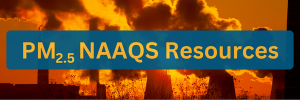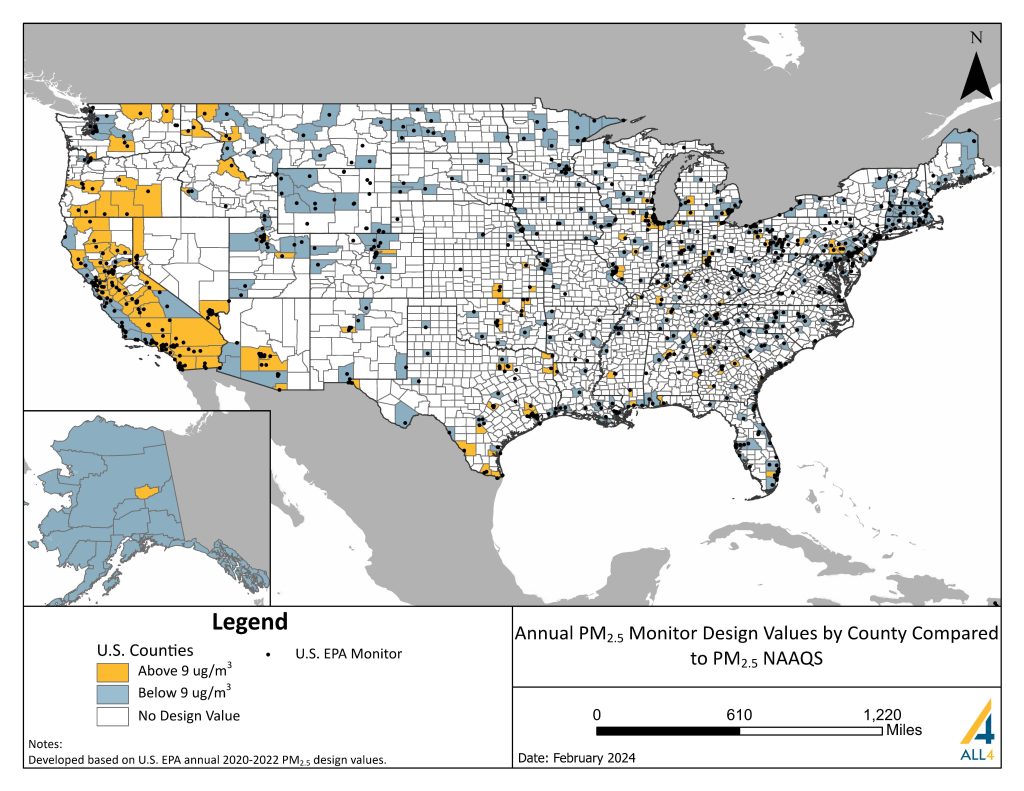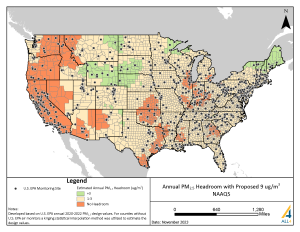U.S. EPA has been regulating forms of particulate matter pollution since the Clean Air Act established National Ambient Air Quality Standards (NAAQS) in 1970. The first particulate matter NAAQS for total suspended particulate (TSP) was established in 1971. As the science on particulate matter advanced, U.S. EPA’s focus turned to regulating smaller size categories of particulate matter and established the first particulate matter less than 10 microns (PM10) NAAQS in 1987 and the first particulate matter less than 2.5 microns (PM2.5) NAAQS in 1997. The 24-hour PM2.5 NAAQS of 35 micrograms per meter cubed (µg/m3) and the annual PM2.5 NAAQS of 12 µg/m3 were most recently retained without revision in 2020. However, in 2021 U.S. EPA chose to reconsider the 2020 decision and on February 7, 2024, U.S. EPA finalized a lowered annual PM2.5 NAAQS of 9.
Any facility that emits PM2.5 should understand the ramifications the lowered PM2.5 NAAQS will have on their business. The lowered PM2.5 NAAQS has the potential to make any project that increases PM2.5 more difficult, costly, and time consuming. Conducting a successful PM2.5 air dispersion modeling demonstration under the lower NAAQS will be challenging. ALL4 has been closely tracking the PM2.5 NAAQS reconsideration process and has been actively assisting industry associations in their efforts to communicate the ramifications of the lowered PM2.5 NAAQS on the industrial sector in the United States. ALL4 has developed this PM2.5 NAAQS Resource Page to keep you up to date on the latest news and milestones. We can assist you with developing a strategy to refine your emissions inventory, evaluating impacts of emissions controls and operational changes, permitting, modeling, and ambient monitoring. For more information or for help assessing how a lowered PM2.5 NAAQS will impact your facility please contact Dan Dix.
PM2.5 Data and Trends
Current Air Quality Where you Live
News
On February 7, 2024, the United States Environmental Protection Agency (U.S. EPA) made the long-awaited announcement that the annual particulate matter less than 2.5 microns (PM2.5) National Ambient Air Quality Standard (NAAQS) will be lowered from 12 micrograms per cubic meter (µg/m3) to 9 µg/m3.
(Issued January 6, 2023) U.S. EPA Proposes Revising Annual PM2.5 NAAQS from Its Current Level of 12 µg/m3 to within the range of 9.0 to 10 µg/m3
ALL4 PM2.5 NAAQS 4TR Articles
|
|
Annual PM2.5 NAAQS Lowered!February 2024 |
PM2.5 Annual NAAQS Proposed to be LoweredJanuary 2023 |
Final Guidance on Ozone and Fine Particulate Matter Permit Modeling Issued by U.S. EPAAugust 2022 |
ALL4 PM2.5 NAAQS Webinars & Events
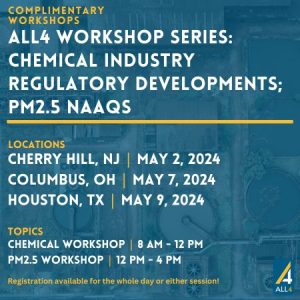 |
ALL4 Workshop Series: Chemical Industry Regulatory Developments; PM2.5 NAAQSMay 2024 – Sign up now! |
 |
PM2.5 NAAQS Lowered – Ask The ExpertsMarch 2024 |
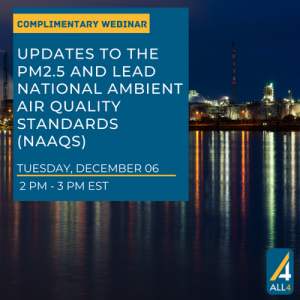 |
Updates to the PM2.5 and Lead National Ambient Air Quality Standards (NAAQS)December 2022 |
ALL4 PM2.5 NAAQS Podcast Episodes
PM2.5 NAAQS Lowered – February 9, 2024
Fine Particulate Current Events and Strategies (Part 1) – October 13, 2021
Fine Particulate Current Events and Strategies (Part 2) – October 27, 2021
Industry Advocacy Efforts
ALL4 has assisted industry associations with advocacy efforts and analyses around the impacts of lower NAAQS standards. Here are some examples of what various industry associations have done recently to communicate the effects of a lower PM2.5 NAAQS; ALL4 has contributed to some of this work:
Questions ALL4 Can Help You Answer
- What happens in my state after EPA promulgates a lower PM2.5 NAAQS?
- What strategies should I consider to deal with a lower PM2.5 NAAQS?
- What are the impacts of a nonattainment designation?
- How can I improve my PM2.5 emissions inventory?
- How can I reduce my actual PM2.5 emissions?
- How can I improve my modeled PM2.5 emissions impacts?
- Should I install a PM2.5 ambient monitoring system?
Ambient Pollutant & Meteorological Monitoring Services
Contact an Air Quality Consultant

